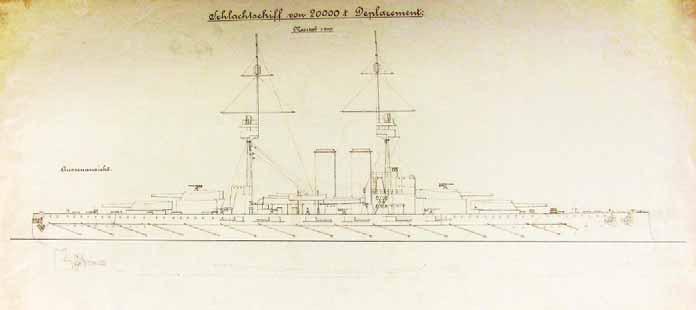After the reconciliation of Franz Joseph with the Hungarian coalition in April 1906, in June and July the delegations voted for the budgets of 1905 and 1906. On 4 July 1906, the Slovene Ivan Šusteršič member of the Austrian delegation demanded that Austria-Hungary should dominate the Adriatic and should execute the fifteen battleships program of Tegetthoff.85 At the next session of the delegations in December 1906 and January 1907 they discussed the budget proposals for 1907. Montecuccoli feared that the new Hungarian coalition government (the former opposition) led by Prime Minister Sándor Wekerle would reject the new battleships. But his fears were baseless the new Hungarian government was content with the April 1906 corroboration of the 1904 agreement on sharing the industrial orders of the Navy. On 21 December 1906, the Hungarian delegation after a short debate on the industrial orders of the Navy voted the expenses of the three battleships, the 3,500 ton cruiser and the new floating dock of 22,000 tons lifting capacity. Only one member of the Hungarian delegation, Count Miklós Zichy voted against the Navy’s budget.86 The Austrian delegation voted for the battleships on 7 January 1907. During the debate some delegation members blamed the high Austro-Hungarian steel prices. The Hungarian wish to give a Hungarian name to one of the battleships caused great hue and cry in the Austrian delegation. Delegation member Leopold Steiner criticized Montecuccoli’s pro-Hungarian policy saying: “… we shall come to see that on a fine day one of the Navy’s ship will be named Kossuth!”87 The Radetzky class was the last Austro-Hungarian battleship class consisting of three units and the last which was built from the ordinary budget of the Navy. The expenses of the next battleship classes were now covered from so called extraordinary credits. To secure these extraordinary credits the Navy needed much more struggle with the politicians, especially with the Hungarian ones. So the Radetzkys were the last battleships which were built by the “easy” way. The Construction of the Radetzky Class Immediately after that both delegations voted for the new battleships the Navy started the prepara-
tory works for the construction. The Navy signed the contracts with the main suppliers: the Stabilimento Tecnico Triestino (STT) shipyard in Trieste (hull and machinery), the Witkowitz Ironorks in Witkowitz (armor plates) and Škoda Works in Pilsen (guns and gun turrets). The first orders for steel material was given in February 1907 and in August 1907 all the steel material needed for the Schlachtschiff I was gathered in Trieste. As the material transports from the subcontractors arrived the shipyard started to prepare one of the two great slipways for the keel laying.88 On 12 September 1907, the keel of the Schlachtschiff I was laid down in Trieste. Two and half months later, on 26 November 1907 the keel of the Schlachtschiff II was laid down on the second great slipway of the shipyard. Because the STT had only two large slipways, laying down the keel of the third battleship was only possible after the launch of one of the battleships. From October 1907 to July 1908, the STT increased the number of the workers from 919 to 1945 in the San Marco yard where the battleships were under construction. The STT planned further increases but the lack of skilled workers made it impossible.89 The STT focused on the building of the first unit of the class and succeeded to break the fourteen month record of the previous class: the much bigger Schlachtschiff I was launched after twelve and a half months on 30 September 1908. On 27 February 1908, Montecuccoli said before the Austrian delegation that the new battleships were the strongest in the Mediterranean.90 This statement was not true because the French Dantons which were larger and more powerful were also under construction. In Austria-Hungary, the procedure of choosing the name for a new warship usually started a few months prior to the launch. At that time, this procedure was regulated by a regulation sanctioned by the Emperor in May 1898. The Emperor had the right to approve the proposals of the Navy, but on rare occasions he made his own proposals. The first proposal written by the Präsidialkanzlei (Naval Chancellery) was presented to the Military Chancellery of Franz Joseph (MKSM) in February 1908. This memorandum included name proposals for the three battleships,91 for the Kreuzer F and for the six destroyers and ten torpedo boats under construction in Fiume. The writer of the memorandum also mentioned the long standing Hun-
— 44 —






























